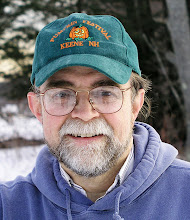 |
| HDR ..................................................................................Blending |
HDR Blending
I have never been a big fan of heavily tone-mapped HDR images, but I appreciate that it is all a matter of taste. I frequently use various post processing techniques to expand the dynamic range of my pictures, but I draw my personal line somewhat short of "cartoonish", “painterly” processing. I want my viewers to see the image as I saw the scene and, at most, ask “Did you use HDR?” and not exclaim “WOW, you really used HDR”. When using HDR programs such as Photomatix or Photoshop’s HDR Pro, I often struggle to keep the effects under control and I find that a level of tone-mapping that works well in one part of the image may be over the top in another. Increasingly I have been using image blending to manage my HDR work. The techniques are simple and provide almost infinite control over the impact of HDR and tone-mapping.
Enhancing the Depth
Last week I got out early to catch the effect of the morning fog on the
 |
| Westmoreland Fog |
Given the soft light, high contrast was not an issue, so I had no need for HDR techniques to capture the full dynamic range. I didn’t capture multiple bracketed images, but I could enhance tonal contrast by applying tone-mapping to a single image. In Photoshop, I processed the image to get the best result using my standard techniques. I didn’t want to punch up the colors and contrast too much and thereby loose the soft feel of the mist, but I felt that objects in the foreground, especially the hay wagon, could benefit from crisper detail. After I was happy with the base picture, I duplicated
 |
| Tone-Mapped Crazy |
play around with the sliders until I feel I have a good result or become frustrated and chuck the whole thing. Typically I end up with something that is dramatic but beyond what I would generally feel comfortable with as a reasonably natural representation of the scene. At this point, instead of giving up in despair, I often use image blending to mute the tone-mapping effect.
 |
| Tome-Mpped Layer at 25% Opacity & Masked |
In this case, I copied the tone mapped layer to the top of the layer stack of the original. Proper alignment was not a problem given that the two layers were from the same image. I then was able to adjust the opacity of the overlying tone mapped layer to get just the amount of enhance contrast that I wanted in the foreground elements. This global adjustment resulted in excessive contrast in the distant background, especially the misty barn. By painting with black on the mask layer I was able completely remove the tone-mapping effect from areas of the background enhancing the sense of depth in the image.
 |
| Blended Image |
Blending together a tone-mapped and regular image allows full control of the amount and location of the enhanced effects. Various levels of HDR/Tone-Mapping can be painted in by applying different levels of gray to the layer mask. White reveals all, but middle gray shows only a partial effect and because all the work occurs on the mask you can adjust and modify as much as you want. In this picture I used a single Tone-Mapped image but a bracketed, multi-image HDR layer works just as well.
Scott Farm Rainbow
 |
| Scott Farm Rainbow |
In another example I worked on an image from a wedding at the Scott Farm in Dummerston, Vermont. The union was blessed by a beautiful
 |
| Over the Top |
 |
| Tone-Mapped Truck |
So get out there and HDR your brains out. Not to worry, you can always calm the craziness with a little gentle blending.
Jeffrey Newcomer
Partridgebrookreflections.com

this app www.lightroomextras.com lets you create animated GIFs from uploaded photos.
ReplyDelete